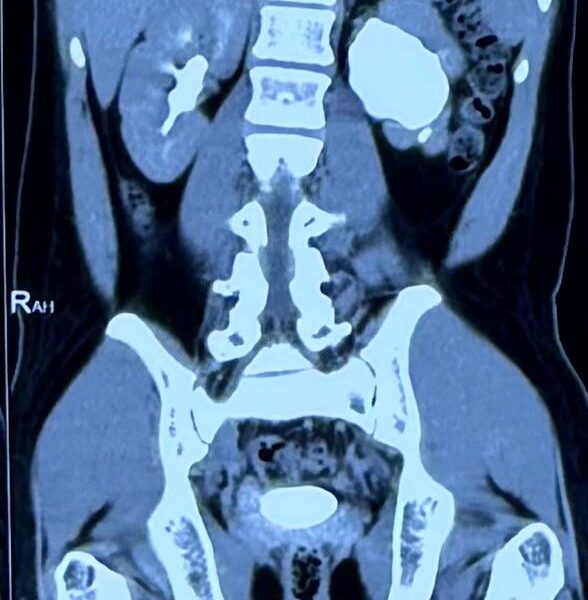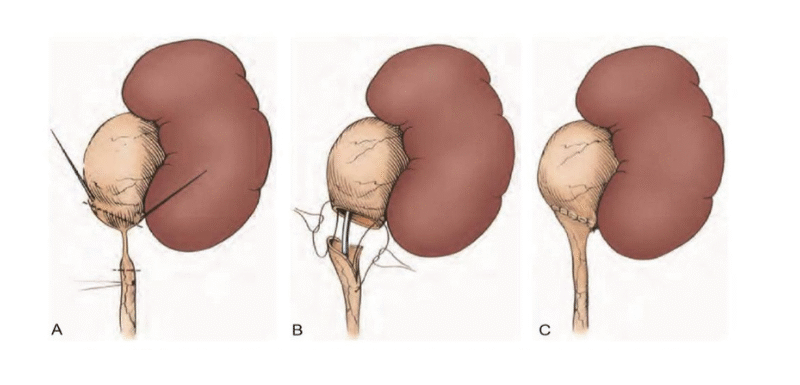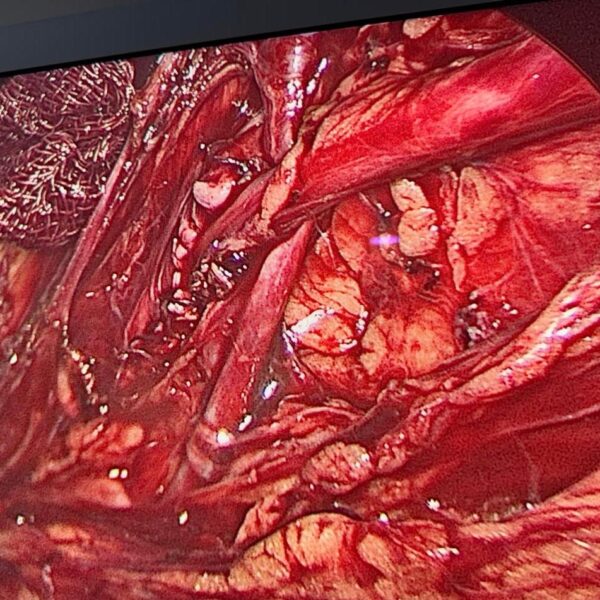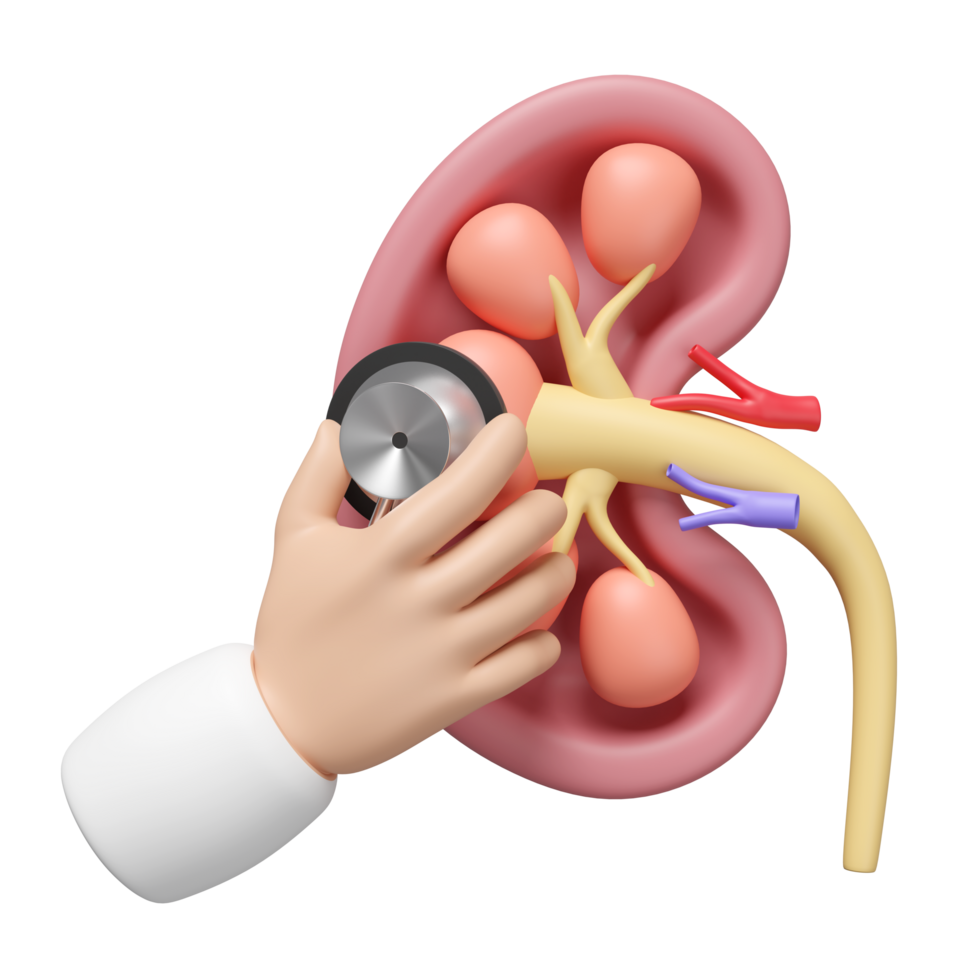What is Ureteropelvic Junction Obstruction (UPJ)?
When a portion of the kidney is obstructed, it is known as ureteropelvic junction (UPJ) blockage. The renal pelvis is where it gets blocked most frequently. Here, the kidney joins one of the ureters, which are the tubes that deliver urine to the bladder. Urine flow out of the kidney is slowed or stopped by the obstruction. After then, urine might accumulate and harm the kidney. Urine flow can occasionally be improved with surgery. In certain instances, the issue will resolve itself.
What Happens Normally?
Urine is produced by the kidneys purifying blood and eliminating water, salt, and waste. After leaving the kidney, the urine travels via the renal pelvis and the ureter. In order to transport urine from the kidney to the bladder, each kidney needs at least one functional ureter—some have two.
What Causes UPJ?
UPJ is present in one out of every 1,500 babies. Children usually have it from birth. The prevention of UPJ is unknown. The kidney is forming when the obstruction happens. Nowadays, ultrasonography is used to detect the majority of instances prior to birth. UPJ obstruction can occur with kidney stones, surgery, or swelling of the upper urinary tract, albeit it is less common in adulthood. Urine produced by the kidney exceeds its capacity to be emptied into the ureter via the renal pelvis in cases of UPJ obstruction. Kidney swelling (hydronephrosis) results from this pooling of urine in the kidney. Usually, just one kidney is impacted. The doctor can frequently anticipate UPJ obstruction before to the baby’s birth because the enlarged kidney is visible on ultrasound.
What Are Common Symptoms?
With the use of ultrasound, most cases are found long before birth. After birth, signs in infants and children are:
• abdominal mass
• urinary tract infection with fever
• pain in the upper abdomen or back, mostly with fluid intake
• kidney stones
• bloody urine
• vomiting
• poor growth in infants
UPJ obstruction may also cause pain with
out an infection.
Some cases of UPJ obstruction are not clear. Urine may drain normally at times, and at other times be blocked. This causes pain that comes and goes. Most children are not in pain unless the urine becomes infected or the blockage gets worse.

CT Urogram Showing left PUJO
How is UPJ Treated?
Not all cases require treatment. During the first 18 months of life, UPJ might get better. After a few months, many babies who initially have poor drainage but have good kidney function will improve. The blockage may worsen in certain babies. First, repeat ultrasounds and occasionally repeat nuclear scans are performed on young patients with enlarged kidneys. Surgery is required if an infant’s urine flow does not improve and the obstruction persists. Adults may get care in several ways.

Anderson Hybes Dismembered Pyeloplasty
Open Surgery
A procedure known as pyeloplasty is frequently used to treat infants. To make a large hole, the ureter is reattached to the renal pelvis after the UPJ is removed. Urine drains freely and swiftly as a result. Additionally, it reduces infection risk and symptoms. Typically, the surgeon’s incision is made right below the ribcage and is 2 to 3 inches long. With a 95% success rate, this procedure typically takes a few hours. Following surgery, a hospital stay of one to two days can be necessary. The usage of drainage tubes can aid in the healing process.
Minimally Invasive Surgery
1. Newer surgical options are less invasive, such as:
Laparoscopic Pyeloplasty is when the surgeon works through a small cut in the abdominal wall. A surgical robot can help guide the tools. This method has a high success rate. It causes less pain and nausea, especially in older children and adults. But it can result in scarring in the abdomen.
In most cases, patients recover rapidly. After surgery, some people could have pain for a few days. To aid with kidney drainage during the healing process, a drainage tube may occasionally be kept in place. When the blocked kidney responds well to treatment, kids can participate in sports or other activities if the other kidney is healthy. After the UPJ blockage is removed, it hardly ever returns.
2. Robotic Pyeloplasty

Laparoscopic Image Showing PUJO with Crossing Vessel
Why Choose Us?
Experience and Expertise
Advanced Technology
Personalized Evidence based Treatment
Honesty and Integrity
Affordable Treatments

